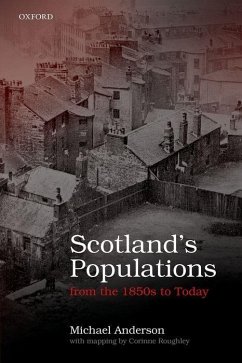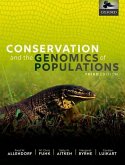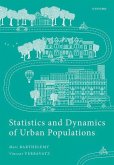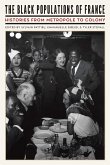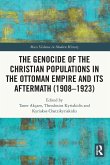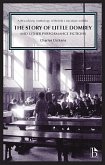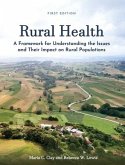Michael Anderson (Honorary Professori Honorary Professorial Fellow
Scottish Populations from the 1850s to Today
Schade – dieser Artikel ist leider ausverkauft. Sobald wir wissen, ob und wann der Artikel wieder verfügbar ist, informieren wir Sie an dieser Stelle.
Michael Anderson (Honorary Professori Honorary Professorial Fellow
Scottish Populations from the 1850s to Today
- Gebundenes Buch
- Merkliste
- Auf die Merkliste
- Bewerten Bewerten
- Teilen
- Produkt teilen
- Produkterinnerung
- Produkterinnerung
A coherent, comprehensive description and analysis of the most recent 170 years of Scottish population history. With its coverage of both national and local themes, set in the context of changes in Scottish economy and society, this study is an essential and definitive source for anyone studying modern Scottish history, sociology, or geography.
Andere Kunden interessierten sich auch für
![Conservation and the Genomics of Populations Conservation and the Genomics of Populations]() Fred W. Allendorf (Regents Professor Em Regents Professor EmeritusConservation and the Genomics of Populations77,99 €
Fred W. Allendorf (Regents Professor Em Regents Professor EmeritusConservation and the Genomics of Populations77,99 €![Conservation and the Genomics of Populations Conservation and the Genomics of Populations]() Fred W. Allendorf (Regents Professor Em Regents Professor EmeritusConservation and the Genomics of Populations136,99 €
Fred W. Allendorf (Regents Professor Em Regents Professor EmeritusConservation and the Genomics of Populations136,99 €![Statistics and Dynamics of Urban Populations Statistics and Dynamics of Urban Populations]() Marc Barthelemy (Universite Paris-Saclay, CNRS, CEA, Institut de PhStatistics and Dynamics of Urban Populations107,99 €
Marc Barthelemy (Universite Paris-Saclay, CNRS, CEA, Institut de PhStatistics and Dynamics of Urban Populations107,99 €![The Black Populations of France The Black Populations of France]() The Black Populations of France30,99 €
The Black Populations of France30,99 €![The Genocide of the Christian Populations in the Ottoman Empire and its Aftermath (1908-1923) The Genocide of the Christian Populations in the Ottoman Empire and its Aftermath (1908-1923)]() The Genocide of the Christian Populations in the Ottoman Empire and its Aftermath (1908-1923)42,99 €
The Genocide of the Christian Populations in the Ottoman Empire and its Aftermath (1908-1923)42,99 €![The Story of Little Dombey and Other Performance Fictions (1850s & 60s) The Story of Little Dombey and Other Performance Fictions (1850s & 60s)]() Charles DickensThe Story of Little Dombey and Other Performance Fictions (1850s & 60s)24,99 €
Charles DickensThe Story of Little Dombey and Other Performance Fictions (1850s & 60s)24,99 €![Rural Health: A Framework for Understanding the Issues and Their Impact on Rural Populations Rural Health: A Framework for Understanding the Issues and Their Impact on Rural Populations]() Rebecca LewisRural Health: A Framework for Understanding the Issues and Their Impact on Rural Populations134,99 €
Rebecca LewisRural Health: A Framework for Understanding the Issues and Their Impact on Rural Populations134,99 €-
-
A coherent, comprehensive description and analysis of the most recent 170 years of Scottish population history. With its coverage of both national and local themes, set in the context of changes in Scottish economy and society, this study is an essential and definitive source for anyone studying modern Scottish history, sociology, or geography.
Produktdetails
- Produktdetails
- Verlag: Oxford University Press
- Seitenzahl: 480
- Erscheinungstermin: 8. Mai 2018
- Englisch
- Abmessung: 236mm x 163mm x 36mm
- Gewicht: 878g
- ISBN-13: 9780198805830
- ISBN-10: 0198805837
- Artikelnr.: 49275199
- Herstellerkennzeichnung
- Libri GmbH
- Europaallee 1
- 36244 Bad Hersfeld
- gpsr@libri.de
- Verlag: Oxford University Press
- Seitenzahl: 480
- Erscheinungstermin: 8. Mai 2018
- Englisch
- Abmessung: 236mm x 163mm x 36mm
- Gewicht: 878g
- ISBN-13: 9780198805830
- ISBN-10: 0198805837
- Artikelnr.: 49275199
- Herstellerkennzeichnung
- Libri GmbH
- Europaallee 1
- 36244 Bad Hersfeld
- gpsr@libri.de
Michael Anderson worked in the University of Edinburgh for forty years, initially in Sociology until he was appointed to the Chair of Economic History in 1979. He was the University's Senior Vice-Principal from 2000 to 2007. Over the forty years he taught a wide variety of Sociology, Economic and Social History, and Social Science Research Design courses. His research interests have included historical work on the family and demography, a large-scale census enumeration book database for 1851, and studies of the social economy of the household, both in the past and, through surveys and interviews, in the 1980s and 1990s. He holds Fellowships of the British Academy and the Royal Society of Edinburgh. He served on the Council of ESRC and chaired the Trustees of the National Library of Scotland for twelve years. Corinne Roughley is Fellow of Hughes Hall Cambridge and has wide-rangng interests in the spatial patterning of people and their activities from the Neolithic to the present.
Part 1. Questions and contexts
1: Scotland's population: not just a history of crises
2: The broad patterns of population change
3: Physical, social, and economic contexts
Part 2. The multiple Scotlands
4: Multiple Scotlands: sub-regional patterns of population change
5: Multiple Scotlands: the nature and sources of sub-regional change
6: Islands
7: The major urban centres
Part 3. Migration and the components and structures of population change
8: The components of population change
9: Patterns of migration
10: Changing age and sex structures and their consequences
Part 4. Fertility and nuptiality
11: Marriage and nuptiality
12: Fertility: national and regional trends
13: The interactions between fertility and nuptiality
14: The first Scottish fertility decline
15: Explaining fertility changes since the 1930s
Part 5. Mortality
16: Scottish national mortality and its wider context
17: Causes of death
18: Spatial variations in mortality and its causes
19: Social and economic differences in mortality
Part 6. Conclusion
20: How and why was Scotland different and what may happen next?
1: Scotland's population: not just a history of crises
2: The broad patterns of population change
3: Physical, social, and economic contexts
Part 2. The multiple Scotlands
4: Multiple Scotlands: sub-regional patterns of population change
5: Multiple Scotlands: the nature and sources of sub-regional change
6: Islands
7: The major urban centres
Part 3. Migration and the components and structures of population change
8: The components of population change
9: Patterns of migration
10: Changing age and sex structures and their consequences
Part 4. Fertility and nuptiality
11: Marriage and nuptiality
12: Fertility: national and regional trends
13: The interactions between fertility and nuptiality
14: The first Scottish fertility decline
15: Explaining fertility changes since the 1930s
Part 5. Mortality
16: Scottish national mortality and its wider context
17: Causes of death
18: Spatial variations in mortality and its causes
19: Social and economic differences in mortality
Part 6. Conclusion
20: How and why was Scotland different and what may happen next?
Part 1. Questions and contexts
1: Scotland's population: not just a history of crises
2: The broad patterns of population change
3: Physical, social, and economic contexts
Part 2. The multiple Scotlands
4: Multiple Scotlands: sub-regional patterns of population change
5: Multiple Scotlands: the nature and sources of sub-regional change
6: Islands
7: The major urban centres
Part 3. Migration and the components and structures of population change
8: The components of population change
9: Patterns of migration
10: Changing age and sex structures and their consequences
Part 4. Fertility and nuptiality
11: Marriage and nuptiality
12: Fertility: national and regional trends
13: The interactions between fertility and nuptiality
14: The first Scottish fertility decline
15: Explaining fertility changes since the 1930s
Part 5. Mortality
16: Scottish national mortality and its wider context
17: Causes of death
18: Spatial variations in mortality and its causes
19: Social and economic differences in mortality
Part 6. Conclusion
20: How and why was Scotland different and what may happen next?
1: Scotland's population: not just a history of crises
2: The broad patterns of population change
3: Physical, social, and economic contexts
Part 2. The multiple Scotlands
4: Multiple Scotlands: sub-regional patterns of population change
5: Multiple Scotlands: the nature and sources of sub-regional change
6: Islands
7: The major urban centres
Part 3. Migration and the components and structures of population change
8: The components of population change
9: Patterns of migration
10: Changing age and sex structures and their consequences
Part 4. Fertility and nuptiality
11: Marriage and nuptiality
12: Fertility: national and regional trends
13: The interactions between fertility and nuptiality
14: The first Scottish fertility decline
15: Explaining fertility changes since the 1930s
Part 5. Mortality
16: Scottish national mortality and its wider context
17: Causes of death
18: Spatial variations in mortality and its causes
19: Social and economic differences in mortality
Part 6. Conclusion
20: How and why was Scotland different and what may happen next?

